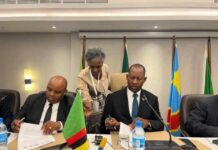According to the bank, the stock of external debt for Zambia rose from US$1.1 billion in 2007 to US$3.4 billion in 2012, recording a 192 percent nominal rise.
“The composition of Zambia’s external debt is also changing,” says the report.
It states that Zambia’s attainment of lower middle-income statues has reduced access to funding on highly concessional terms, even as its financial choices have expanded.
According the 2013 Zambia Economic Brief report by the World Bank released this week in Lusaka, the middle-income status attainment by Zambia has led to an increase in concessional borrowing since 2011.
Between June 2011 and May 2013, the government borrowed an estimated US$1.61 billion on non-concessional terms, including a US$750 million sovereign bond in September 2012.
The World Bank says there is need for Zambia to have economically viable and ‘ready to go and implement’ projects before deciding on how much and when to borrow, particularly on non-concessional terms.
It says the country’s capacity for project appraisal, public financial management (PFM), and debt management requires further strengthening.
During the publication of the 2012 Zambia Economic Brief, the World Bank noted that while public investment has been ramped up, it is yet to be matched with the selection of high-return projects and efficient implementation.
The bank also notes that since the early 2000s, the country has embarked on a series of PFM reforms, yet the current systems face several weaknesses.
Several reports have indicated that PFM systems require strengthening, including budget process, cash management, public procurement debt management and internal audit and control.
Zambia’s debt growing
ZAMBIA’s external debt has been growing rapidly since 2006, despite the multilateral debt relief initiative having substantially reduced the country’s debt, says the World Bank.

 JOIN DRIVERN TAXI AS PARTNER DRIVER TODAY!
JOIN DRIVERN TAXI AS PARTNER DRIVER TODAY!











